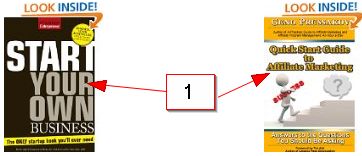The first thing readers in bookstores or virtual stores lay eyes on is the book cover. And like any other thing put in a showcase, it needs to be attractive enough to catch the readers’ attention and entice them to read what is written on the cover.
Designing a book cover is an art and if you are not really really good at digital design, this is a task that you should offload to an artist. However, as an author – even non fiction – you have a good imagination, and can discuss the elements of your next book cover. Here are a few things I suggest you ponder over before finalizing you next book cover.
Parts of book cover
Depending on your marketing strategy and collateral this requirement may change. If you plan to have your book printed, your book cover will have at least three main parts. You need to carefully design each of these three different parts of the book.
Front
Without doubt the most important part of your book cover. This will be visible to readers in the bookstore during the promotion phase when your book is arranged in the front of the store and front-facing on the shelf. This is also the most visible part of the book cover in digital stores. For digital store display you also need to consider the thumbnail appearance of the book cover. The thumbnail image is smaller than the main image and the most crucial. Crucial because this is the image the readers will see when they are searching for books based on keywords or categories.
Back
The second important part of the book cover is the back. Most readers will switch to the back if you manage to entice them with your front cover. This part of the cover is commonly used to give more information of the book. This information usually includes a brief summary of the book and some advance praise and reviews you may have received for your book.
Side
The side cover is the part of the cover that covers the rib or binding of the book. This part of the cover will be most visible once you move out of the promotion phase and your book is stacked vertically in the bookshelf. Make sure that the text is clear enough and shows both the title and the author name.
Although the readers won’t judge you on how you have used these three parts of the book cover, they will knowingly or unknowingly respond to the visual aspects of the book cover.
Colors
Use colors to differentiate information areas of your book. For example, you can use a background for the title and a different shade for the subtitle or author names. However, make sure that the background color and the font color do not clash. Create a contrast so that the text is clear.

As you can see in the image above, the yellow background and white text do not create the right contrast and therefore the text is quite difficult to read. Whereas the dark, brown background provides the much-needed contrast for the title text.
Apart from highlighting the information, colors also help communicate a tone. Choose colors that complement your book’s subject matter and the context.
Typography
Typography is a powerful communication tool and can provide a lot of information visually. Using the right Type can help you invoke the emotional response that you want in your readers.
The Image
If you are tempted to add an image to your book cover, ensure that the image communicates a clear message. A book cover is a very limited space and you should use all the available elements to send the right message to the reader.

Both the book covers above use images as part of their cover design. The image on the left shows a man fixing some gears, which communicates that the book is about machines or workers in manufacturing industry. The book cover on the right shows a lemonade stand, which is significant with kids’ first attempt at business during fairs or fête.
While the second book cover image (lemonade stand) clearly supports the book subject (Managing Your Business The Toddler Way), the image in the other cover is not really congruent with the subject of the first book (Shoestring Venture: The Startup Bible).
The Title
If there is one thing that the book title needs to do well, it is to unequivocally communicate the subject of the book. Cryptic titles may look good on a whodunit? fiction material, but for non-fiction it is important that you make it easy for the reader to understand the subject of the book and facilitate the book search.
The Subtitle
If you do decide to use a slightly cryptic title, use the subtitle to elaborate on your books’ topic. And even if you do not use a cryptic title, the title and subtitle combination helps in summarizing the book. For example, you can use the title to denote the broader industry and the subtitle to define the specifics of the book content. For non-fiction authors, this is also a good opportunity to include additional keywords in the book title.
The Summary
The summary more commonly goes on the back cover of the book. Keeping in mind the other legibility factors that we discussed earlier, use the back cover to explain what the book will do for the reader. You can also use this space to show testimonials of advanced readers and praise for your other books, if any.